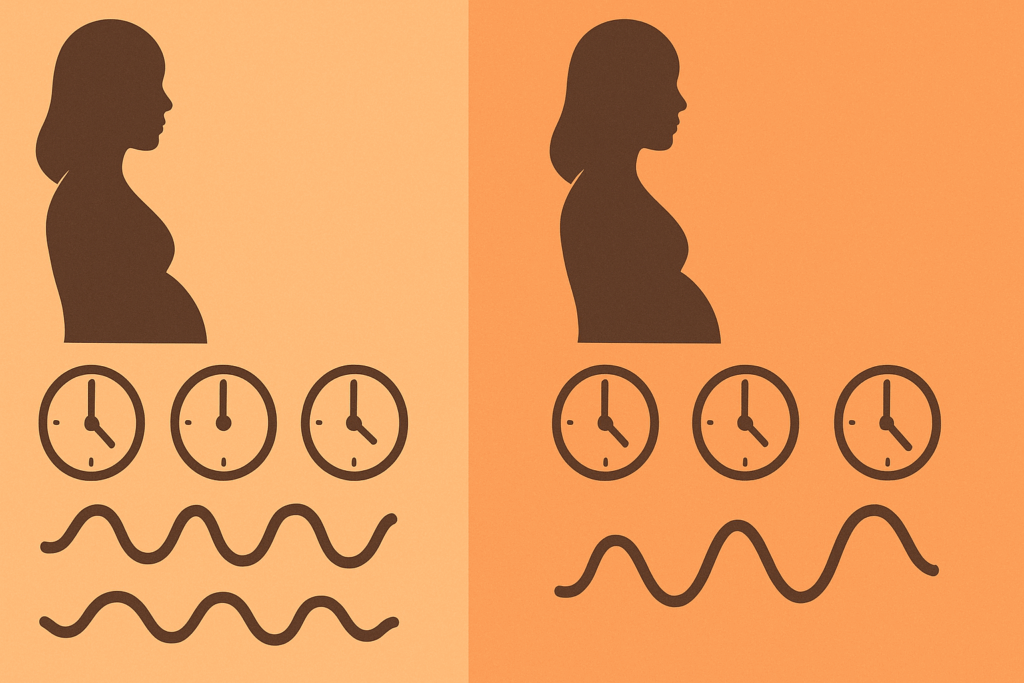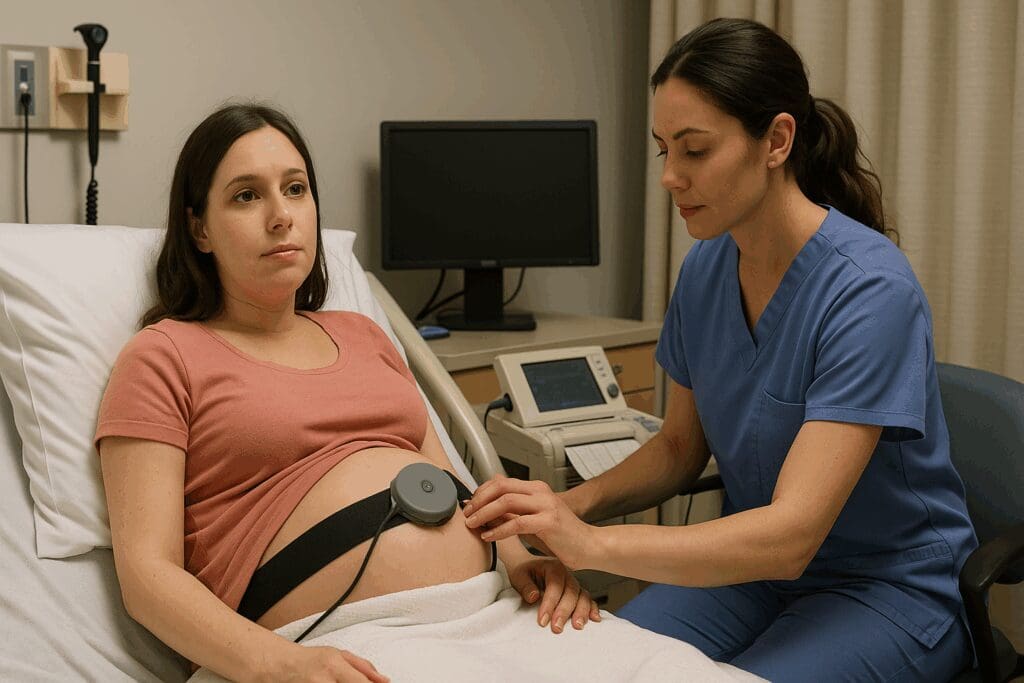Welcoming a new life into the world is a profound journey, one filled with anticipation, uncertainty, and meticulous preparation. Among the myriad concerns expectant mothers face, a pivotal question often emerges: when will hospital admit you for labor? This inquiry reflects a deeper need to understand not just the physical signs of labor but the clinical and logistical benchmarks that hospitals use to determine admission. Being informed empowers mothers to advocate for themselves, reduces unnecessary stress, and enhances the overall birth experience.
You may also like: Essential Techniques for Pregnant Pushing: A Powerful Guide to Labor Preparation
Understanding Labor: The Physiological Prelude
To grasp when a hospital might admit you for labor, it is crucial to first understand what labor is and how it unfolds. Labor marks the final phase of pregnancy, characterized by rhythmic uterine contractions that facilitate the dilation and effacement of the cervix, ultimately allowing the baby to pass through the birth canal. This process is typically divided into three stages: early labor, active labor, and the transitional phase.
Early labor often begins subtly, with contractions that are mild, irregular, and infrequent. This phase may last for hours or even days, particularly in first-time pregnancies. Active labor, by contrast, involves more intense, regular contractions that occur every 3 to 5 minutes and last up to a minute each. The cervix dilates from 6 to 10 centimeters during this stage, signaling a crucial threshold for hospital admission. The final transition phase is the most intense, where the cervix reaches full dilation, and the body prepares for pushing and delivery. Recognizing these stages helps expectant mothers better understand how early can you go into labor and when medical attention becomes necessary.

Common Signs Indicating Labor Has Begun
Labor manifests through a variety of physical signals, some of which can be ambiguous. The classic signs include consistent contractions, the rupture of membranes (water breaking), a bloody show (mucus plug discharge), and lower back pain. However, the presence of these signs does not always guarantee immediate hospital admission. For example, the rupture of membranes without contractions may warrant observation rather than admission, depending on the timing and gestational age.
Another key indicator is cervical dilation. While cervical checks can be subjective and uncomfortable, they provide crucial information about labor progression. Hospitals often rely on this data, alongside contraction patterns and maternal symptoms, to determine admission readiness. Understanding these signals helps answer the question: when will hospital admit you for labor, particularly when signs are inconsistent or subtle.

How Early Can You Go Into Labor: Premature Considerations
It is not uncommon for expectant mothers to worry about how early can you go into labor and what that means for hospital protocol. Labor that begins before 37 weeks of gestation is classified as preterm and carries distinct risks for both mother and baby. Hospitals will usually admit a patient experiencing preterm labor to provide interventions such as tocolytics to delay birth, corticosteroids to accelerate fetal lung development, and magnesium sulfate for neuroprotection.
Women at risk of preterm labor may undergo frequent monitoring, especially if they present with risk factors such as a history of premature births, multiple gestations, infections, or cervical insufficiency. In these scenarios, even mild contractions or minimal dilation can justify hospital admission. Recognizing the nuances of early labor ensures mothers receive timely care, improving outcomes and reducing complications.
Medical Criteria for Hospital Admission
Hospitals do not admit patients arbitrarily; specific clinical guidelines inform their decisions. The most common admission criterion is active labor, defined by regular, painful contractions that are strong enough to impact cervical dilation. For most first-time mothers, this stage is marked by cervical dilation of at least 4 to 6 centimeters.
Additional factors influencing admission include maternal blood pressure, fetal heart rate patterns, and the presence of comorbidities such as gestational diabetes or preeclampsia. If a patient presents with high blood pressure, reduced fetal movement, or signs of placental abruption, the hospital may admit her even in the absence of active labor.
Understanding these criteria provides clarity for expectant mothers wondering when will hospital admit you for labor. It also helps distinguish between true and false labor, the latter being a frequent reason for premature hospital visits and subsequent discharges.

False Labor vs. True Labor: Knowing the Difference
Distinguishing between false labor and true labor is essential in minimizing unnecessary hospital visits. False labor, or Braxton Hicks contractions, often occurs during the third trimester and can mimic real labor. These contractions are typically irregular, do not intensify over time, and may subside with hydration or changes in position.
In contrast, true labor contractions follow a predictable pattern, becoming stronger, closer together, and longer in duration. They do not abate with rest or hydration and often radiate from the lower back to the abdomen. If there is doubt, contacting a healthcare provider for guidance can be invaluable.
By recognizing these differences, mothers can better evaluate when to leave for the hospital, improving the likelihood of being admitted at the appropriate stage of labor. This insight directly addresses concerns about how early can you go into labor and the timing of hospital intervention.

Hospital Protocols: What to Expect During Evaluation
Upon arrival at the hospital, expectant mothers undergo a thorough evaluation to assess labor status. This typically includes a physical examination, monitoring of uterine contractions and fetal heart rate, and a cervical check. The goal is to determine whether labor is progressing and if hospital admission is warranted.
If a patient is not in active labor, she may be asked to walk around the hospital for a period, after which another examination is performed. This approach helps differentiate between prodromal labor and active labor. In cases where labor is not progressing, the patient may be discharged with instructions for monitoring at home.
These hospital protocols underscore the importance of timing and preparedness. They also provide context for the question: when will hospital admit you for labor, especially in cases where initial symptoms are inconclusive.
When Will Hospital Admit You for Labor If You Are High-Risk?
High-risk pregnancies necessitate more vigilant monitoring and may lead to earlier hospital admissions. Conditions such as gestational hypertension, preeclampsia, gestational diabetes, multiple gestations, and placenta previa increase the likelihood of complications during labor and delivery.
In such cases, hospitals may admit patients preemptively for observation or planned interventions. For example, a patient with preeclampsia might be admitted to manage blood pressure and monitor fetal wellbeing. Similarly, if labor begins early in a pregnancy with known complications, hospital staff may choose to intervene sooner to ensure a safe delivery.
Understanding these exceptions is crucial for mothers with high-risk pregnancies. It reframes the question from a general inquiry to one that must consider individual medical history, thereby offering a personalized answer to when will hospital admit you for labor.

The Role of Birth Plans in Hospital Admission
A birth plan is a valuable tool for communicating your preferences to the medical team. While not binding, it offers a framework for how you would like your labor and delivery to proceed, including preferences for pain management, mobility during labor, and support people present in the room.
In terms of hospital admission, a birth plan can clarify your expectations and help the care team align their protocols with your wishes. For example, if your plan emphasizes a natural birth with minimal intervention, your provider may guide you to delay hospital admission until active labor is well established. Conversely, those desiring early epidural pain relief may choose to be admitted sooner.
Having an open dialogue about your birth plan during prenatal visits ensures that everyone is on the same page. This proactive communication can make the admission process smoother and more supportive of your goals.
How Hospital Admission Policies Differ by Facility
It is essential to understand that not all hospitals follow the same protocols for labor admission. While general guidelines are often similar, individual facilities may have unique policies based on staffing, patient volume, and available resources. For instance, a high-volume urban hospital may adhere strictly to criteria like 5-6 centimeters dilation before admission, whereas a smaller community hospital may be more flexible.
These differences can significantly impact your labor experience. Touring hospitals in advance and asking specific questions about their admission policies can help you prepare. Knowing what to expect enables you to better plan for when will hospital admit you for labor and helps you avoid surprises during a critical moment.
Pain Management and Its Influence on Timing of Admission
Pain tolerance varies widely among women, and the intensity of contractions is a common reason for seeking hospital admission. For some, the pain becomes unmanageable before reaching active labor, prompting a hospital visit even if criteria for admission are not yet met.
Hospitals can offer pain relief options such as IV medications, epidurals, and other techniques, but these interventions are typically reserved for those who have been admitted. If you’re planning to utilize pharmacologic pain relief, this may influence the timing of your arrival. Communicating your pain level and coping ability to your provider can ensure you receive the support you need at the right time.
Understanding this dynamic underscores the importance of evaluating not only physical signs of labor but also emotional and psychological readiness. Pain management is a valid and important part of deciding when will hospital admit you for labor.
What Partners and Support People Should Know
Labor is not a solitary experience; partners and support people play a vital role in helping the birthing person navigate the early stages. Being well-informed about the signs of labor, hospital protocols, and what to expect during evaluation can empower them to provide meaningful assistance.
Support people should be prepared to help time contractions, offer comfort measures, and assist in decision-making about when to go to the hospital. Their ability to remain calm and focused can significantly influence the birthing person’s confidence and sense of control.
Encouraging support people to attend prenatal classes, read educational materials, and participate in birth plan discussions enhances the overall experience. Their involvement becomes especially critical in answering the pivotal question of when will hospital admit you for labor, as they are often the first to observe signs and help initiate the hospital visit.
Navigating Early Labor at Home: When to Wait and When to Go
Many healthcare providers encourage mothers to labor at home during early labor, particularly if there are no complications. This approach allows for greater comfort, freedom of movement, and emotional support in a familiar environment. It also helps ensure that hospital resources are used efficiently and that admission occurs at the most appropriate time.
Techniques such as breathing exercises, warm baths, and positional changes can aid in coping with early contractions. Timing contractions with an app or stopwatch helps monitor progress and provides data that can be shared with your provider. If contractions become more frequent, longer, and more intense, or if your water breaks, it’s usually time to head to the hospital.
Understanding how to manage early labor at home equips mothers with the confidence to make informed decisions. It also contributes to a smoother transition to hospital care when the time is right.
The Importance of Prenatal Education in Labor Preparation
Prenatal classes offer invaluable education that demystifies the labor process and prepares families for the realities of childbirth. Topics often include stages of labor, signs of true versus false labor, pain management options, and hospital protocols. Such classes help answer common questions like how early can you go into labor and when to expect hospital admission.
Many classes include hands-on training in breathing techniques, partner support strategies, and postpartum care. The more informed you are, the better equipped you’ll be to advocate for yourself and navigate the unpredictable nature of labor.
Investing time in prenatal education is one of the most effective ways to prepare for labor. It empowers mothers and their partners with the knowledge and skills needed to recognize labor signs and determine when medical intervention becomes necessary.
Answering When Will Hospital Admit You for Labor: Putting It All Together
Ultimately, the question of when will hospital admit you for labor is best answered through a combination of medical criteria, personal readiness, and effective communication with your healthcare provider. Understanding the signs of labor, recognizing the distinction between true and false contractions, and being aware of hospital policies all contribute to making informed decisions.
Whether you’re navigating a routine pregnancy or managing high-risk factors, knowing what to expect provides clarity and reduces anxiety. With the support of your care team, a well-prepared birth plan, and a strong foundation of knowledge, you can confidently approach labor and delivery knowing you’re ready for whatever unfolds.
Frequently Asked Questions About Labor Admission
1. Can psychological stress or anxiety affect the timing of hospital admission for labor?
Yes, elevated stress or anxiety can influence both the perception of labor symptoms and the clinical decision to admit a patient. In some cases, heightened anxiety can mimic labor signs, such as increased heart rate, abdominal discomfort, or irregular contractions, potentially leading to a premature hospital visit. More importantly, some hospitals may consider a patient’s psychological state in their decision-making, especially if anxiety impairs pain management or poses a risk to maternal or fetal well-being. Addressing these concerns through mindfulness techniques, prenatal counseling, or birthing classes can help expectant mothers better assess their symptoms. Understanding when will hospital admit you for labor includes acknowledging how emotional health factors into clinical judgment.
2. Are there cultural or personal preferences that may influence labor admission timing?
Yes, cultural beliefs and personal birth philosophies can significantly influence expectations around labor and admission. For example, some cultures may prefer early hospitalization due to generational norms, while others advocate for home-based early labor management. Hospitals increasingly recognize these preferences and may accommodate earlier or delayed admission when safe to do so. It is vital to discuss these preferences with your provider beforehand and include them in a birth plan. This collaborative approach ensures that your values are respected while maintaining medical safety regarding when will hospital admit you for labor.
3. What happens if I arrive at the hospital too early and I’m not admitted?
If you arrive too early and are not in active labor, the hospital may discharge you with instructions to return later. While this may feel disheartening, it is standard practice designed to ensure resources are focused on those needing immediate care. In some cases, patients are encouraged to walk, rest, hydrate, or eat light snacks to help labor progress. Hospitals may also schedule a follow-up check-in within a few hours if symptoms are borderline. Knowing how early can you go into labor versus when admission is warranted helps you avoid unnecessary visits and frustration.
4. Do hospital admission standards change based on the time of day or staffing levels?
While medical guidelines for labor admission are fairly consistent, real-world variables like time of day, weekend hours, or hospital staffing levels can influence decision-making. During high-volume periods or overnight shifts, providers may triage more strictly, especially for patients in early labor. Conversely, if staffing allows for more flexibility, borderline cases may be admitted for observation. Understanding when will hospital admit you for labor means accounting not only for clinical symptoms but also for the hospital’s operational context. Asking about these nuances during a facility tour or prenatal visit can help set realistic expectations.
5. Can certain labor induction methods be used at home to delay early admission?
Some low-risk patients explore natural induction methods at home to encourage labor progression before heading to the hospital. Techniques such as walking, nipple stimulation, acupressure, or specific herbal teas are commonly used, although scientific evidence on their efficacy varies. These methods should always be discussed with a healthcare provider before use. If successful, they may help advance early labor and reduce the need for prolonged hospital triage. Understanding how early can you go into labor and how to manage that phase effectively at home empowers patients to arrive at the hospital at the optimal time for admission.
When Will Hospital Admit You for Labor: Advanced Medical and Monitoring Considerations
6. How do wearable devices or mobile apps factor into labor monitoring and hospital decisions?
Emerging technologies, including contraction-timing apps and wearable devices that track uterine activity or fetal heart rates, are increasingly used by expectant mothers. While not a substitute for clinical evaluation, these tools offer valuable data to share with healthcare providers. In some hospitals, remote monitoring systems allow patients to send real-time data for assessment, helping to determine if a hospital visit is necessary. These technologies are particularly useful in gauging how early can you go into labor and whether symptoms meet criteria for admission. However, professional judgment remains paramount, and no app should replace a direct call to your provider.
7. If I have a high pain threshold, could that delay my hospital admission?
Yes, individuals with high pain tolerance may underreport or minimize contraction severity, potentially delaying the recognition of active labor. This can lead to a compressed timeline between admission and delivery, increasing the urgency of hospital procedures upon arrival. Providers may recommend more frequent check-ins or early assessments for patients with atypical pain responses. Self-monitoring tools and regular prenatal communication can help mitigate this issue. Understanding when will hospital admit you for labor includes being honest about discomfort levels, even if they seem manageable.
8. Can previous birth history affect current admission timing decisions?
Absolutely. Patients who experienced rapid labor or complications in a prior delivery are often encouraged to arrive earlier in subsequent pregnancies. This proactive approach is based on evidence that second or third labors can progress more quickly. In such cases, even mild or early signs of labor may justify hospital admission to avoid emergency deliveries outside a medical setting. Sharing your obstetric history openly ensures your provider can create a tailored plan that accounts for how early can you go into labor and how that timeline may differ for you.
9. What are the risks of delayed admission during active labor?
While managing early labor at home has benefits, delayed admission during active labor can pose risks such as precipitous birth, inadequate pain management, or limited access to emergency interventions. Some patients misjudge the intensity or duration of contractions, especially in their first pregnancy, leading to late arrival. This can be particularly concerning if complications arise, such as fetal distress or breech presentation. Establishing a clear action plan with your provider ensures that when will hospital admit you for labor becomes a well-informed decision rather than a reactionary one.
10. How do hospitals accommodate patients who live far from the facility?
For those residing a significant distance from the hospital, early admission or pre-labor observation may be considered, especially if past deliveries were fast. Some facilities offer temporary maternity housing or encourage patients to stay nearby as they approach their due date. This strategy helps mitigate the risks associated with sudden labor onset and long travel times. Understanding how early can you go into labor and planning accordingly becomes even more critical when access to care is not immediate. Discussing geographic challenges during prenatal care can help providers develop a safe, individualized admission plan.
Reflecting on the Journey: Final Thoughts on Labor Admission and Early Labor
As you move closer to your due date, it’s natural for questions to intensify—chief among them being how early can you go into labor and how to determine when the hospital will admit you for labor. Armed with accurate information, emotional support, and thoughtful preparation, you can face this transformative moment with confidence. Remember, labor is as much an emotional and psychological experience as it is a physical one. Trusting your instincts, staying informed, and maintaining open lines of communication with your care provider can make all the difference in your childbirth journey.



